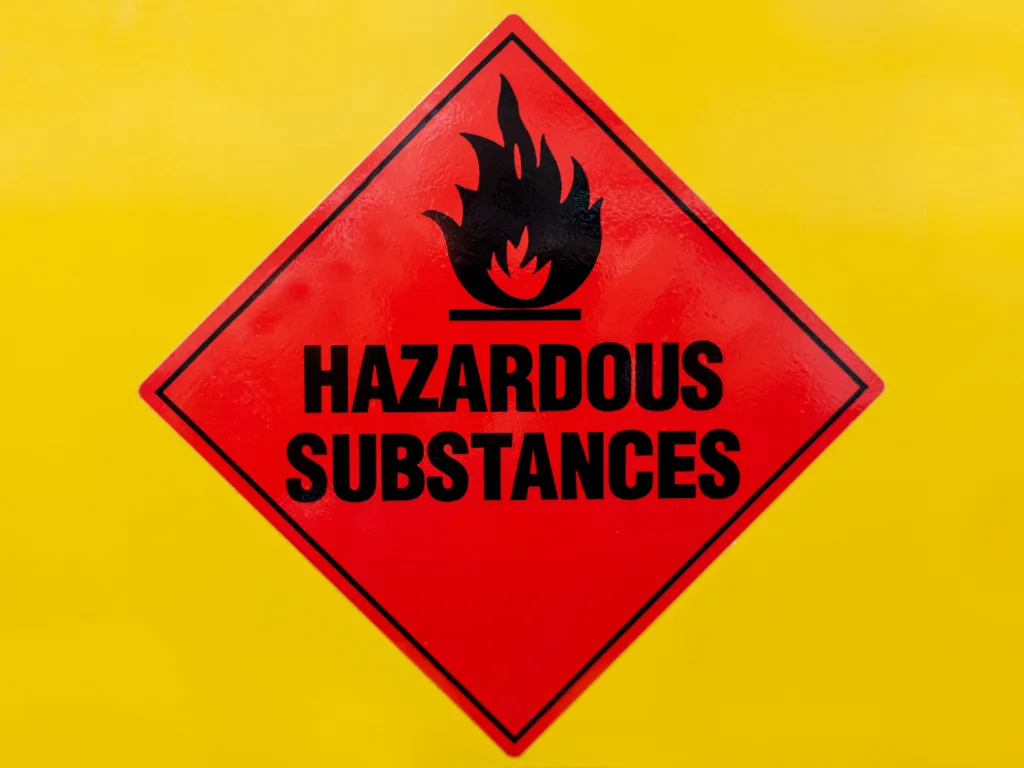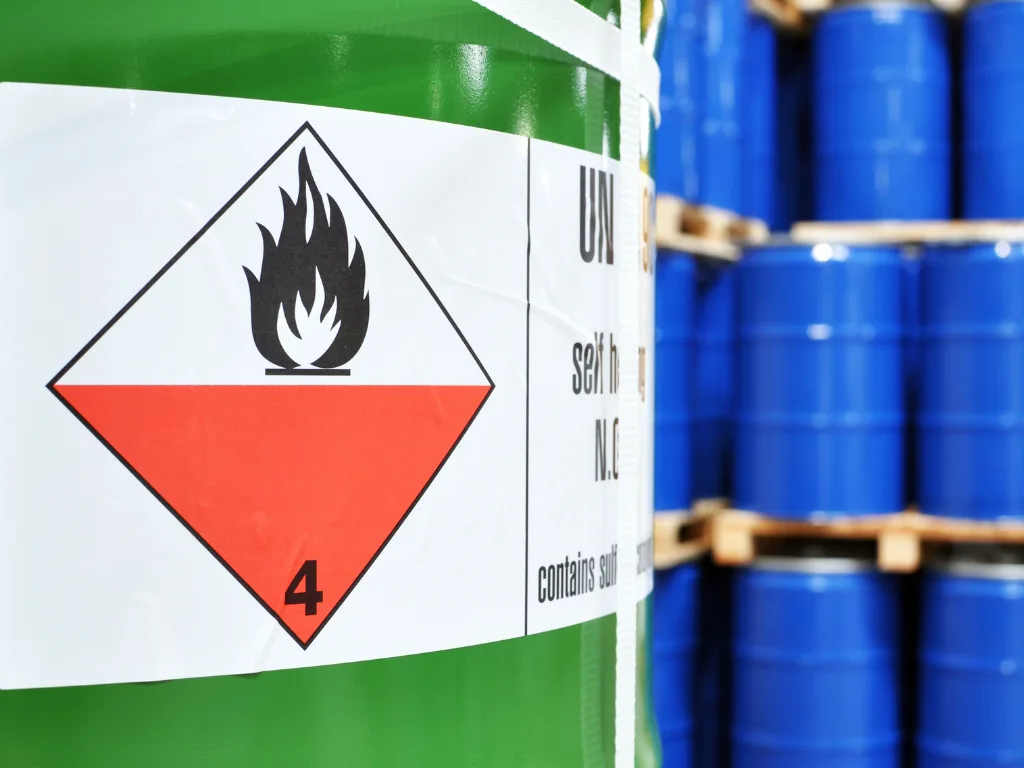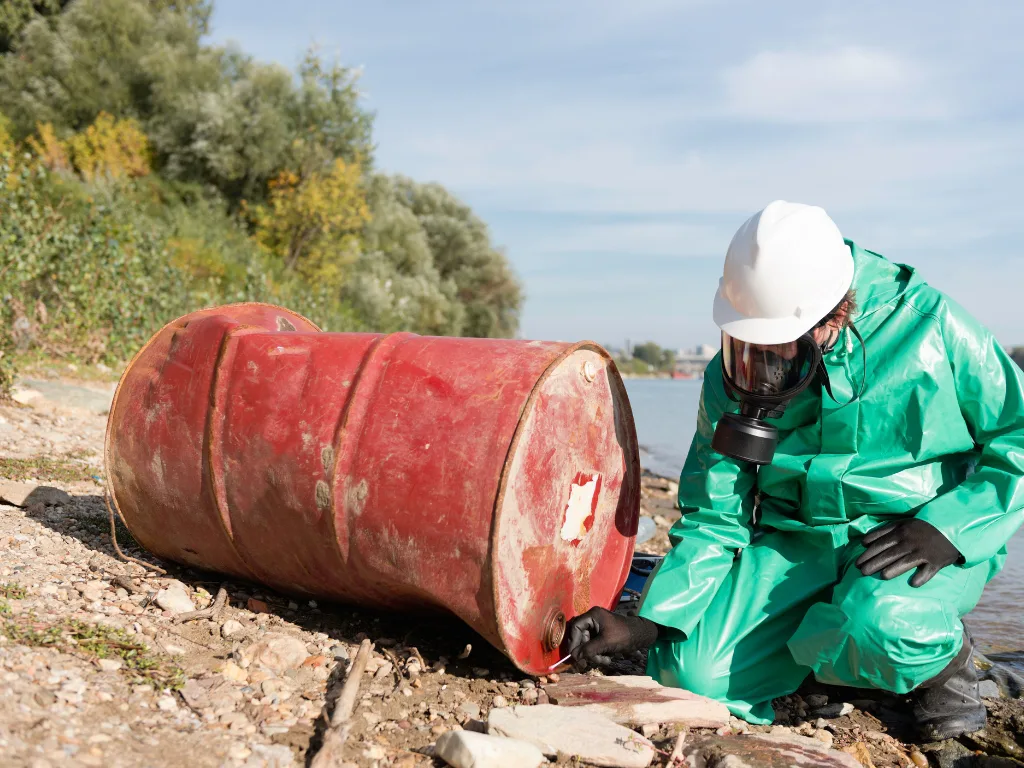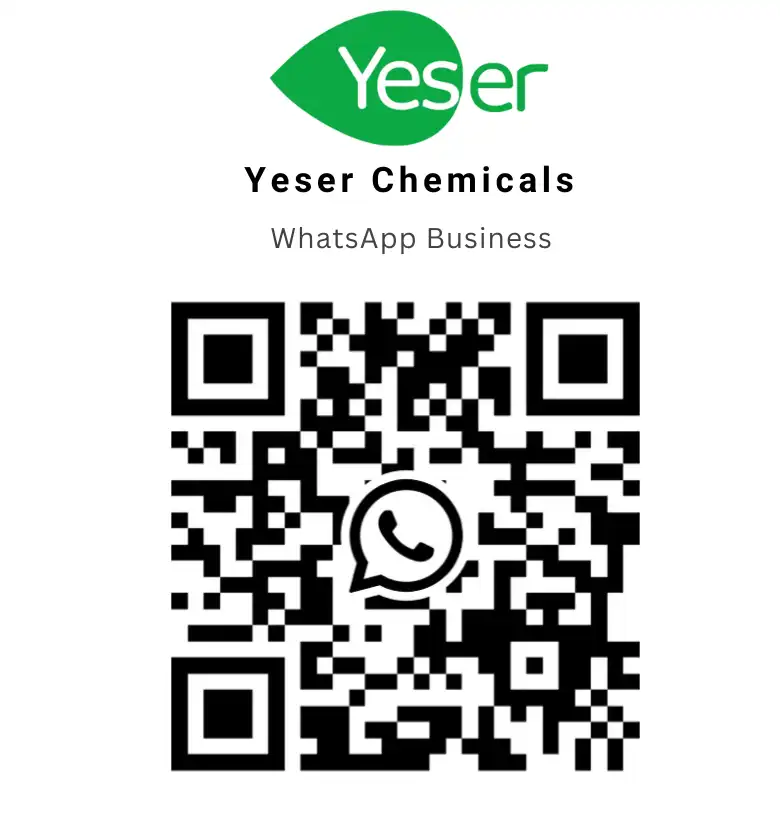Introduction
Navigating the complex world of chemical safety is a crucial skill for anyone working with hazardous substances. Safety Data Sheets (SDS) hold the key to understanding and mitigating risks associated with chemical handling. This comprehensive guide unlocks the secrets of interpreting and using SDS files effectively. We’ll delve into the importance of these documents, their legal requirements, and their 16-section structure. You’ll learn to interpret hazards, precautions, handling and storage instructions, and more. With real-world examples and advanced tips, this guide will educate, engage, and empower you to take charge of chemical safety in your workplace. So, let’s embark on this journey to a safer, more informed working environment!
Understanding SDS Files
What is an SDS/MSDS File?
SDS stands for Safety Data Sheet, also known as Material Safety Data Sheet (MSDS). It is a document that contains information on the properties, hazards, and safe handling of a particular chemical substance or mixture. This document has become mandatory since June 1st 2015 under OSHA’s revised Hazard Communication Standard(ref).
The SDS is intended to provide information to workers, emergency responders, and others who may be exposed to a chemical substance. It typically includes information on the chemical composition, physical and chemical properties, potential health hazards, safe handling and storage procedures, and emergency response measures.
Importance of SDS Files
There are several reasons why Safety Data Sheets (SDS) play an essential role in chemical safety:
- They provide critical information about potential health hazards associated with using different types of chemicals.
- They offer guidelines for safe handling practices which can help prevent accidents at work.
- They provide first-aid measures required in case someone is exposed to or injured by these chemicals.
- They assist organizations in complying with specific regulations regarding labeling requirements.
Legal requirements for SDS files
SDS files are regulated by different laws in different countries, like the OSHA Hazard Communication Standard in the United States and The European Chemicals Agency (ECHA) in Europe. It is considered a comprehensive guideline on what agencies must cover when drafting or distributing their SDS documents. This includes technical specifications such as format instructions, how to present chemical hazards information on sheet labels, and standardizing phraseology throughout documents (e.g., “flammable” instead of “highly combustible”).
Structure of an SDS file
An ideal user-friendly MSDS/SDS should come with written sections that provide cues for identifying critical information about a hazardous substance easily.
The 16-section format set by OSHA(United States) allows clear communication throughout each level necessary for consistency in information provision globally:
- Identification: Product Name/Identifier
- Hazard identification: GHS classification(s), signal word(s), hazard statement(s)
- Composition/information on ingredients
- First-aid measures
- Assembly/procedures
- PPE/Equipment/protection measures
- Handling & Storage
- Exposure controls/personal protection
- Physical + Chemical properties
- Stability & Reactivity
- Toxicological Information
- Ecological Information
- Disposal Considerations
- Transport Information
- Regulatory Info (International Regulations if required)
- Other Important Info
Interpreting SDS Files
Now we have established their structure, here’s everything you need to know to interpret the key information on safety data sheets correctly:
Hazards and Precautions
When reading an SDS file, the primary focus is assessing potential hazards associated with handling said chemicals/mixtures.
Hazards include potential dangers to human health, the environment, and physical property like buildings:
Examples of things to look for include toxicity warnings about exposure to certain chemicals (via skin or airways) as well as flammability concerns like ignition points or risks if this substance comes into contact with water.
Precautions are necessary procedures done before and after handling hazardous chemicals. This could be accessing PPE gear requirements/employing containment mitigation measures, and cleaning up spills during transport/storage.

Handling and Storage Instructions
Product users have little wiggle room when it comes to storing said products properly. Chemicals cannot be stored willy-nilly around our homes/workplaces. Special attention needs to be given because storage can react differently depending on how a substance is housed if exposed products cause reactions:
It is essential that you follow all recommended handling guidelines from storage thresholds, temperatures/duration allowed exposure/incompatible materials–(foods/certain meds/uncovered wounds).

First-aid Measures
In case of an emergency occurrence, while working with hazardous materials, Personnel should have proper training in administering first aid treatment from SDS and formulate an emergency plan -see section 4. There must be a prompt response by waylaying the effects of possible hazards associated with potential infirmity caused by prolonged/prolonged consumption.
- Remember! One should not move an unprotected injured individual as their clothing may become contaminated via exposure)

Personal Protective Equipment (PPE)
PPEs serve as the foremost protective gear when dealing with toxic chemical substances/narcotics containing potentially harmful ingredients. Typical PPEs options:
- Gloves
- Respirators/Masks
- Goggles/Eye Protectors
- Aprons/Full-length Suits
Different chemicals require various personal protection items & required precautions against potential hazards they possess. Always remember!
Properly selecting and using required PPE help minimize secondary contaminations during work that pose probable risk factors expressed through avoidable accidental spills.

Environmental Considerations
A little-known fact is that hazardous waste disposal constitutes a lot of environmental hazards and the indiscriminate use of products like pesticides risks polluting water/air.
Thus, SDS provides information about how chemicals/narcotics released can affect soil/water quality. This section also states the appropriate conditions for disposing of harmful substances effectively& regulatory procedures or standards for effective treatment.

Disposal Instructions
According to existing protocols for safe handling and disposal practices are emphasized requirements, Users must understand the relevant measures based on their source (manufacturer/agency), locality laws/regulations, or national/sub-regional/national occupational safety policies.
Proper disposal ensures chemical waste & residue are managed appropriately and eradicated without endangering life’s eco-system, people/plants, or animal life habitats.

Using SDS Files
Once you’ve got an understanding of what is present in an SDS file after totally interpreting it, Deploy its evidence!
To maximize efficiency when reviewing MSDS files: -Employ staff training programs -Ensure easy accessibility to generated data sheets stored close to areas that handle hazardous chemicals. -Convey the importance of receiving updated Data Sheets from suppliers regularly.
When To Use An SDS File
SDSs are used when anyone comes into contact with any hazardous substance at work. The face value contains enough information about each ingredient, highlighting potential hazards and providing guidelines on recommended precautions needed during possible exposure.
How To Obtain An SDS File?
The easiest way to obtain an SDS file is to contact the manufacturer or supplier of the product. They are required by law to provide an SDS file to customers upon request.
To request an SDS file, you will need to provide the following information:
- The name of the product
- The manufacturer or supplier of the product
- The product’s UPC or SKU number
You can usually find this information on the product label or packaging.
Sharing SDS Files
When handling these documents within organizations, ensure records are held in all required outlets. This included inside vehicles carrying them throughout business locations, ensuring no lapse/hiccups during usage action at authorized sites mandated by Operator Competency-based certification processes and OSHA’s Hazard Communication Standard guidelines.
Training Employees to Read SDS Files
Employers are responsible for educating their employees on reading SDS files, as this knowledge is vital for ensuring workplace safety when handling hazardous chemicals. OSHA mandates the maintenance of an SDS for each chemical product and the training of employees on label elements and SDS formats. Interactive training featuring practical exercises and examples is key to facilitating comprehension. Employers must also make SDS files readily accessible to employees, whether through online databases or physical binders. Scheduling regular refresher training is essential for reinforcing acquired knowledge.
Common Mistakes When Reading SDS Files
When dealing with SDS files, it’s essential to be diligent and thorough, as mistakes can lead to hazardous conditions and potential accidents. Here are some common mistakes often encountered while reading SDS files:
Misinterpreting Hazards
Even with established standards guiding each section of SDS files, vital information about specific hazards can sometimes be overlooked or skimmed over. This can result in workers using inadequate personal protective equipment (PPE) due to a lack of clarity about potential dangers. Updating and replacing outdated SDS files is crucial to prevent misunderstandings about newly added hazardous features or changes in formulations.
Misunderstanding Precautions and PPE
Precautionary statements, which outline protective measures against hazardous substances, are sometimes misinterpreted as optional rather than mandatory. This can lead to recurrent illnesses and potential liability issues. Additionally, ignoring standard signs indicating the required PPE, such as respirators, can compromise worker safety and expose them to imminent dangers or slow, cumulative reactions that may not be immediately noticeable.
Not Recognizing Potential Environmental Impact
Users may occasionally disregard the environmental concerns associated with the use of chemical substances. Environmental impacts can have long-lasting effects on human and animal life and damage natural habitats. Indiscriminate disposal practices can adversely affect air quality and contaminate water supplies.
Improper Disposal Practices
Improper disposal of hazardous chemicals into landfills or water supplies can adversely affect a community’s overall well-being. Emergency treatment measures and fire prevention installations in industrial spaces are sometimes taken for granted, leaving active chemicals vulnerable to fire breakouts.
By being aware of these common mistakes and ensuring a thorough understanding of SDS files, you can contribute to a safer working environment and minimize the risk of accidents.
Advanced Tips for Reading SDS Files
Understanding Chemical Names, Abbreviations and Formulas
Many elements and chemicals are represented using various acronyms and formulas that may be confusing for some users. To improve comprehension, it is essential to:
• Learn basic chemistry concepts
• Familiarize yourself with common chemical abbreviations
• Refer to reputable resources or guides
• Understand the Chemical Abstract Service (CAS) control number system
Cross-referencing with Other Resources
SDS files from suppliers may not always provide comprehensive information about a particular chemical or its potential hazards. To ensure you have a complete understanding of a chemical product, it is recommended to cross-reference the SDS with other reputable resources. These resources may include:
• Government websites
• Other reputed suppliers
• Scientific journals
• Industry-specific databases
Cross-referencing can help fill knowledge gaps and provide a more comprehensive understanding of the chemical product.
Reviewing SDS Updates and Revisions
Chemical manufacturers/suppliers may update or revise their SDS files from time to time. To ensure you are always working with accurate and up-to-date information, it is essential to:
• Regularly review the SDS files for the chemicals you work with
• Obtain updated SDS files from manufacturers or suppliers
• Ensure all employees handling hazardous chemicals have access to the most recent SDS files
Utilizing Technology and Software
Leveraging technology and software can make managing and accessing SDS files easier. Some useful tools include:
• SDS management software
• Mobile applications
• Online databases
Utilizing these tools allows you to streamline the process of managing SDS files, quickly access crucial information, and ensure that all employees can access the necessary safety information.
Conclusion
SDS files are essential for maintaining safety and compliance in the workplace when handling hazardous chemicals. They provide crucial information on the hazards, properties, and safe handling procedures for chemicals, serving as a vital tool for employers to train their employees and for workers to protect themselves and the environment.
Final tips for handling SDS files
By following these guidelines and understanding the importance of SDS files, you can significantly reduce the risks associated with hazardous chemicals and promote a safer work environment.
For more information on SDS files, you can visit OSHA’s Hazard Communication Standard and ECHA’s Guidance on Safety Data Sheets.






